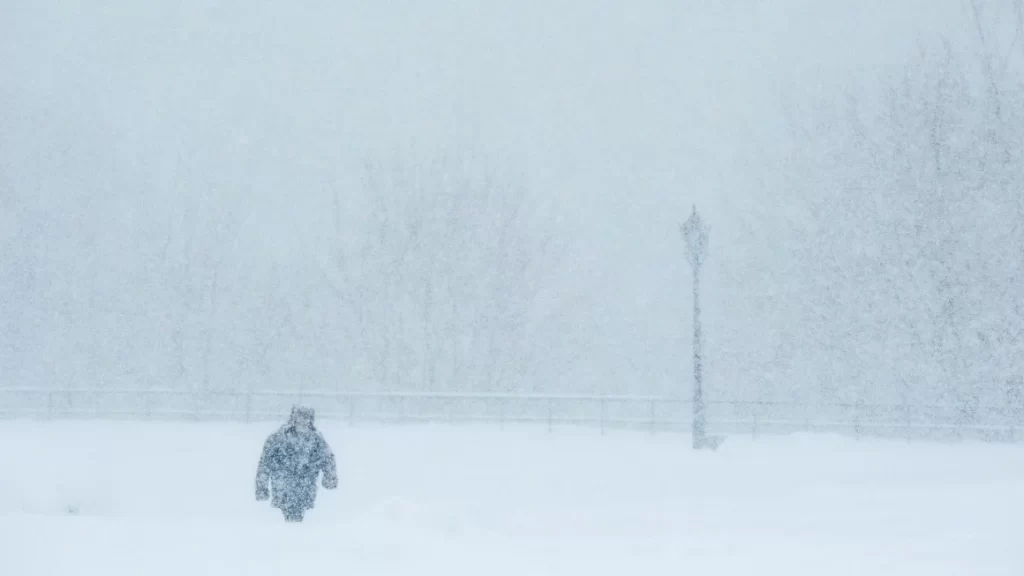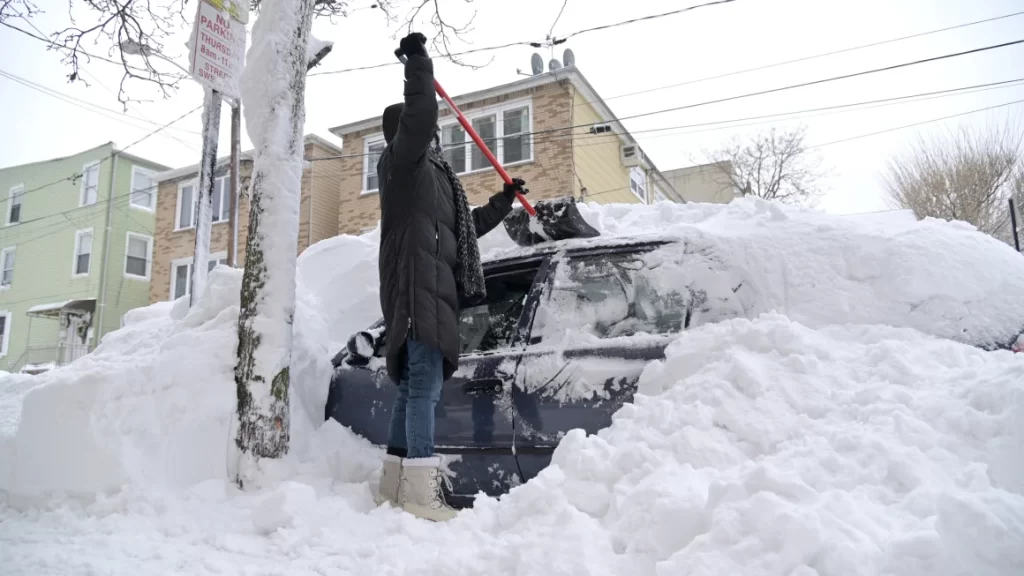News
Navigating the Icy Maze: Strategies for Surviving a Blizzard
In the winter of 1997-98, Dawn O’Hair embarked on a journey from Chicago to Indianapolis, not anticipating that her romantic weekend escapade would transform into a perilous battle against a relentless blizzard. As her story unfolds, it becomes a poignant reminder of the unpredictability and unforgiving nature of blizzards, a menace that catches many off guard. Let us delve deeper into the nuances of blizzards, understanding their characteristics, exploring precautionary measures, and unraveling tales of survival. Let’s find out with nowglas.

Understanding the Blizzard Menace
A blizzard, as defined by the National Weather Service, is not just any winter storm. It requires large amounts of falling or blowing snow, winds exceeding 35 mph, and visibility reduced to less than a quarter mile for at least three hours. This combination creates perilous driving conditions, leading to disorientation for those navigating on foot or by car. Michael Muccilli, a meteorologist with the National Oceanic and Atmospheric Administration (NOAA), emphasizes that the strong winds and freezing temperatures associated with blizzards can result in dangerous wind chills, increasing the risk of hypothermia and frostbite.
Your First Line of Defense: Awareness and Avoidance
To combat the potential dangers of blizzards, preemptive measures are crucial. Whether embarking on a road trip or planning outdoor activities, checking weather forecasts becomes paramount. Muccilli recommends monitoring weather conditions along the entire route, especially if traversing high mountain passes. For hiking or camping excursions, Beth Pratt of the National Wildlife Federation advises against complacency, emphasizing the importance of checking forecasts even in non-traditional winter months.
Geographical Insights and Dressing for Survival
Understanding where blizzards are most common is essential for preparedness. While upper Midwest and Great Plains regions in the United States are frequent targets, blizzards can occur in various parts of the world, including Russia, central and northeastern Asia, northern Europe, Canada, and Antarctica. Dressing appropriately is crucial in such scenarios, with layered clothing, mittens or gloves, and a hat recommended by the American Red Cross. Layering helps regulate body temperature, and covering your mouth protects lungs from frigid air.
Survival Kits and Road Trip Preparedness
For road trips in wintry conditions, a well-stocked safety kit is indispensable. Muccilli suggests including items like a survival blanket, road salt, shovel, jumper cables, drinking water, repair kit, flashlight, road flares, and a cell phone charger. Routine checks of wiper fluid, tire pressure, tire tread, and oil are imperative, coupled with ensuring a fully charged phone. If weather conditions worsen during a trip, Muccilli advises pulling over to the closest gas station or hotel to ride out the storm and avoid driving around barriers onto closed-off roads.
Worst-Case Scenarios: Stay Warm and Stay Still

In the unfortunate event of a worst-case scenario, where survival becomes a challenge, staying warm and staying still are the primary objectives. Pratt, who narrowly escaped a blizzard in her college years, underscores the importance of not walking yourself out of a blizzard due to challenging navigation and increased energy expenditure. Finding shelter or, if unavailable, building a snow cave for protection against the wind is crucial. The National Weather Service (NWS) recommends strategic exercise to maintain blood circulation without overexertion, emphasizing the need to conserve energy in the frigid conditions.
Lessons Learned and A Happy Ending
Dawn O’Hair’s ordeal ended with a lesson on the importance of weather forecasts and better planning. While young love might sometimes cloud judgment, her decision to stay with her car and not venture into the blizzard saved her from potential disaster. As O’Hair reflects on her experience, she acknowledges the need for greater attention to weather forecasts and better planning. Her journey, though fraught with challenges, culminated in a happy ending as she eventually married the boyfriend with whom she had the spat, showcasing the resilience and adaptability needed to survive the unpredictable nature of blizzards.
Exploring the Historical and Global Impact of Blizzards
Beyond individual experiences, it’s essential to recognize the broader impact of blizzards on history and global regions. Throughout history, blizzards have disrupted travel, commerce, and daily life. The infamous 1972 blizzard in Iran claimed thousands of lives, illustrating the deadly potential of extreme winter weather in unexpected regions. Similarly, Spain faced a rare blizzard in early 2021, resulting in fatalities and highlighting the need for preparedness in traditionally temperate climates.
Geographically, blizzards are most common in the upper Midwest and Great Plains in the United States, but they can occur in various areas, excluding the Gulf Coast and coastal California. Internationally, blizzards frequently visit Russia, central and northeastern Asia, northern Europe, Canada, and Antarctica. This global perspective emphasizes the need for a comprehensive understanding of blizzards, their characteristics, and survival strategies.

Winter Activities and Safety Measures
As winter enthusiasts embrace activities like skiing, snowboarding, and hiking, safety measures become paramount. Rick Shandler, national program director of the Safety Team at National Ski Patrol, urges skiers to prioritize safety over maximizing their lift ticket value. Carrying a fully charged cell phone, a whistle, and a space blanket while on the slopes ensures communication and protection in case of emergencies. These small, portable items can make a significant difference in adverse weather conditions.
Strategic Exercise and Conservation of Resources
Surviving a blizzard demands strategic decisions and conservation of resources. The NWS advises finding shelter, creating a lean-to or snow cave, and attempting to set a fire if stranded. Melting snow for drinking water becomes essential, emphasizing the importance of avoiding eating unmelted snow, which can lower body temperature. Strategic exercise, such as moving limbs and extremities, helps maintain blood circulation without risking overexertion. These survival strategies provide a roadmap for individuals facing the daunting challenge of enduring extreme winter conditions.
Embracing Spontaneity: A Day in Tenerife with Edinburgh Adventurer Danielle Mclean
Conclusion: Resilience in the Face of Nature’s Fury
The stories of individuals like Dawn O’Hair and the broader impact of blizzards on history underscore the resilience required to navigate nature’s fury. From awareness and preparedness to strategic decision-making in dire situations, surviving a blizzard demands a multifaceted approach. Whether embarking on a winter road trip, engaging in outdoor activities, or facing unexpected blizzards in traditionally temperate regions, understanding the nuances of extreme winter weather is paramount. As we unravel the tales of survival and draw lessons from historical events, one theme remains constant – the indomitable spirit needed to brave the icy maze of blizzards and emerge unscathed on the other side.
See more: Groundbreaking Study Links Microplastics in Arteries to Increased Risk of Heart Disease

